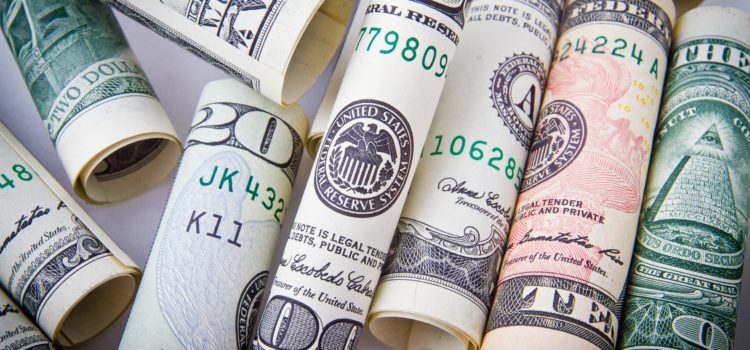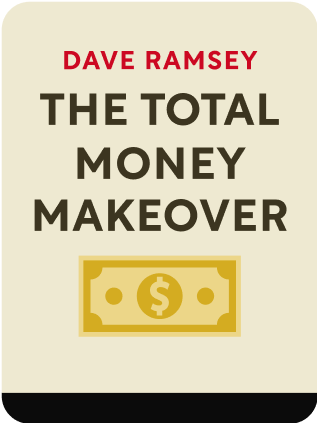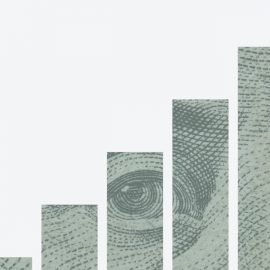

This article is an excerpt from the Shortform book guide to "The Total Money Makeover" by Dave Ramsey. Shortform has the world's best summaries and analyses of books you should be reading.
Like this article? Sign up for a free trial here .
What is baby step 2 of the Total Money Makeover program? What is the Debt Snowball?
Baby step 2 is to pay off your debts. You start with the smallest debt and work up from there.
Read more about baby step 2 of the Total Money Makeover program.
Baby Step 2: The Debt Snowball
The big problem with debt is that it ties up your income with making payments, which keeps you from building wealth. You need to get rid of debt so you have control of your income and can put it to work for you, which is the purpose of baby step 2.
It’s fairly easy to accumulate wealth when you don’t have car payments, a mortgage, and credit card or medical debt. To see how this works, consider the average person with a $50,000 annual income and the following payments:
- $850 house payment
- $180 car payment
- $165 student loan payment
- $185 credit card debt payment
- $120 other payments
Total: $1,995
But if you invested $1,995 a month in a growth-stock mutual fund, you’d be a millionaire in 15 years; it would grow to $2 million in five more years, to $3 million in three more years, $4 million in two and a half more, and to $5.5 million in two more years—a total of 28 years.
The key is to get out of debt so you can start investing. This is probably the toughest of the money makeover steps—it requires the most effort and sacrifice, plus your relentless, single-minded focus.
The Debt Snowball Process in Baby Step 2
The debt snowball method in baby step 2 is the way to pay off debt. It’s easy to understand, but it takes effort and commitment to pull it off. Tens of thousands of Total Money Makeover converts have proven it works. There are two steps:
1) Make a list of your debts, in order from the one with the smallest balance to largest. Exclude only your mortgage, which will be addressed in another step, described in Chapter 11. A form is available for downloading here.
2) Each month, apply every extra dollar you have to the smallest debt until it’s paid off. Make the minimum payment to stay current on all other debts.
After the smallest debt is paid, apply the payment you had been making on it, plus any additional money you have, toward paying off the next smallest debt. When the second debt is paid off, apply the payment amounts from the first two debts, plus any other money you can find, to the third debt on your list, and so on.
Each time you pay off a debt, you increase the amount you can pay on the next one—your payments continue to snowball until your debts are paid off.
Starting with the smallest debts gives you some quick wins to motivate you, and by the time you get to the largest payments, such as car payments and student loans, you’re in a position to pay over $1,000 a month. You’ll soon be debt-free except for your mortgage.
Success Stories
Eliminating debt totaling tens of thousands of dollars is daunting, but with concerted effort, it can be done. Here are a few examples from people who applied the Total Money Makeover process:
- Steve and Amanda, a couple in their early 30s, used the debt snowball over 35 months to eliminate a six-figure debt, including $60,000 in student loan debt, $35,000 in credit card debt, plus loans on two new cars and a mortgage. Steps included selling a vehicle, drastically cutting spending, and taking on extra work shifts.
- Josh and Amy, a couple in their 20s with two kids, amassed $169,000 in debt due to overspending that included a BMW, rental property, and an expensive vacation. To eliminate their debt, they sold property including the BMW, had a huge garage sale, and cut their monthly spending to just $1,700.
- Jeff and Teresa, a couple in their 40s, paid off $30,000 in credit card debt in three months using the debt snowball method. They had gotten into trouble because they habitually used credit cards for everything, including gas, food, clothing, and vacation rentals. Going forward, they eliminated their credit cards, downsized their lifestyle, and created a monthly budget.
Tips for Success
In summary, to make baby step 2 work, you need to create a monthly budget, be current on your loan payments before starting the process, and list your debts from smallest to largest. You need to make two mindset adjustments as well:
1) Focus intensely on becoming debt-free: If you’re half-hearted, the debt snowball won’t work. Tell yourself, “I’m getting out of debt, no matter what.” Fully focusing your mind on a goal is as powerful as focusing the sun’s rays with a magnifying glass and setting a piece of paper on fire.
Develop gazelle-like intensity: a gazelle keeps an intense eye on its surroundings to avoid being taken down by a cheetah. Similarly, your focused attention (or gazelle intensity) on your finances will save you from debt.
2) Stop using credit: While you’re working through your debt list, remember that your goal is to eliminate all debt—don’t replace any paid off debts with new debt or baby step 2 won’t work. Make a pledge that you’ll never borrow money again. Before long, you’ll face a test of your gazelle intensity level—you’ll need a major car repair or get the urge to make a big purchase using credit. To eliminate temptation, cut up your credit cards. You can’t get out of your debt hole by digging it deeper.

———End of Preview———
Like what you just read? Read the rest of the world's best book summary and analysis of Dave Ramsey's "The Total Money Makeover" at Shortform .
Here's what you'll find in our full The Total Money Makeover summary :
- The 7 steps to achieving financial stability (you'll love #7)
- A fool-proof plan for becoming debt-free
- How myths about debt and money are crippling your financial health






